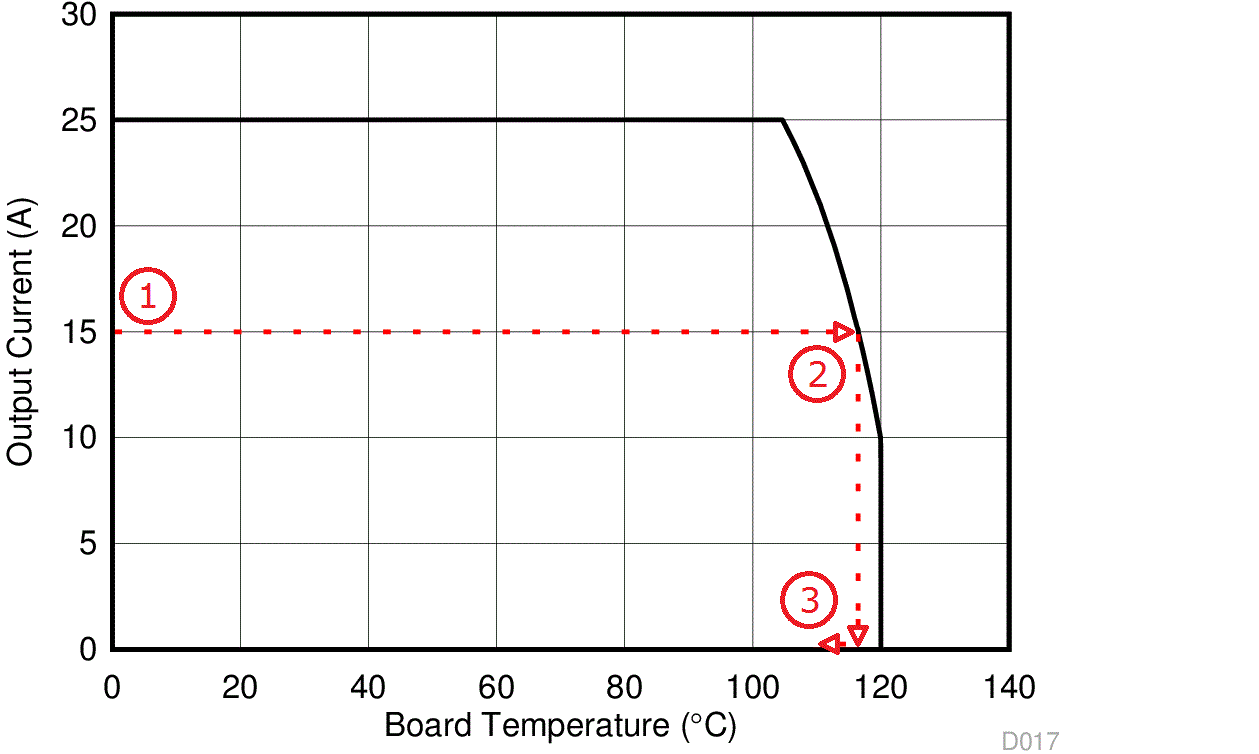ZHCSAO1D January 2013 – August 2016 CSD97374Q4M
8.5.3 Calculating SOA Adjustments
- SOA adjustment for switching frequency ≈ 0.3°C (Figure 5)
- SOA adjustment for input voltage ≈ 1.2°C (Figure 6)
- SOA adjustment for output voltage ≈ –1.1°C (Figure 7)
- SOA adjustment for output inductor ≈ 1.4°C (Figure 8)
- Final calculated SOA adjustment = 0.3 + 1.2 + (–1.1) + 1.4 ≈ 1.8°C
 Figure 15. Power Stage CSD97374Q4M SOA
Figure 15. Power Stage CSD97374Q4M SOA
In the design example above, the estimated power loss of the CSD97374Q4M would increase to 3.1 W. In addition, the maximum allowable board and/or ambient temperature would have to decrease by 1.8°C. Figure 15 graphically shows how the SOA curve would be adjusted accordingly.
- Start by drawing a horizontal line from the application current to the SOA curve.
- Draw a vertical line from the SOA curve intercept down to the board/ambient temperature.
- Adjust the SOA board/ambient temperature by subtracting the temperature adjustment value.
In the design example, the SOA temperature adjustment yields a reduction in allowable board/ambient temperature of 1.8°C. In the event the adjustment value is a negative number, subtracting the negative number would yield an increase in allowable board/ambient temperature.